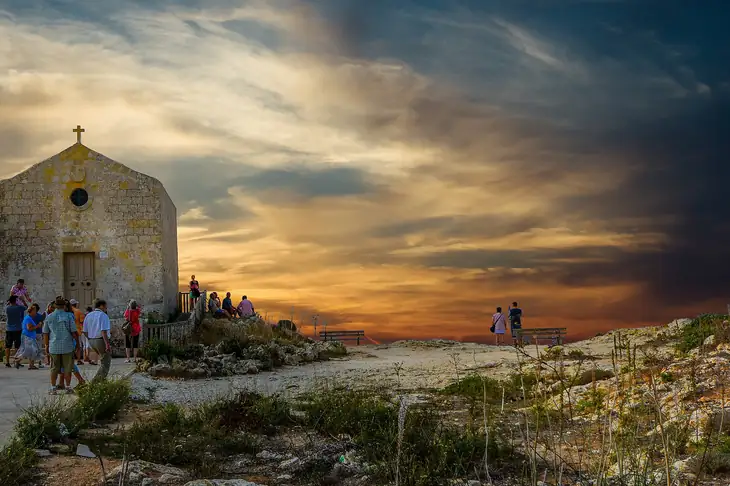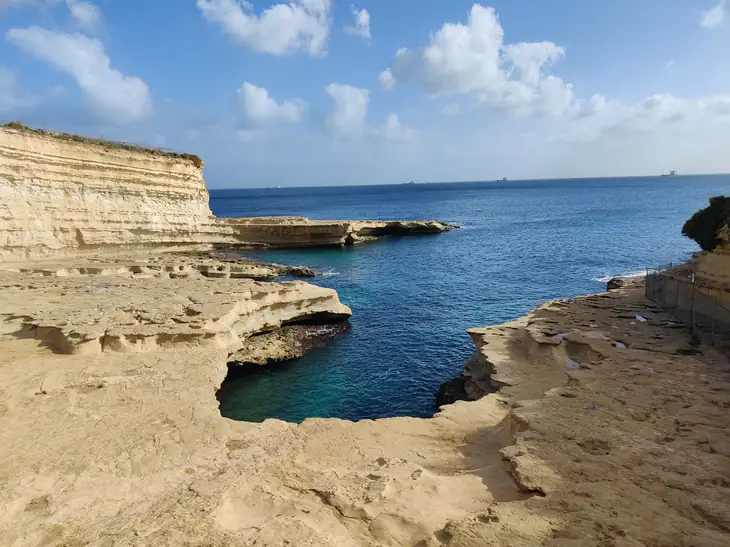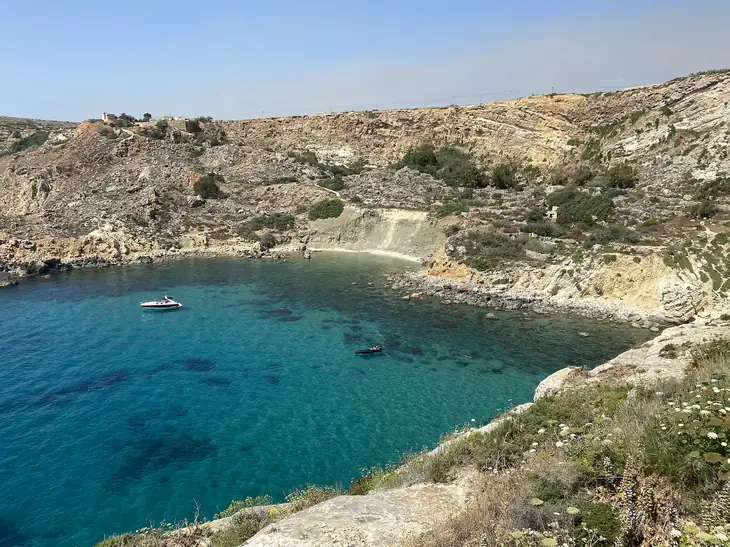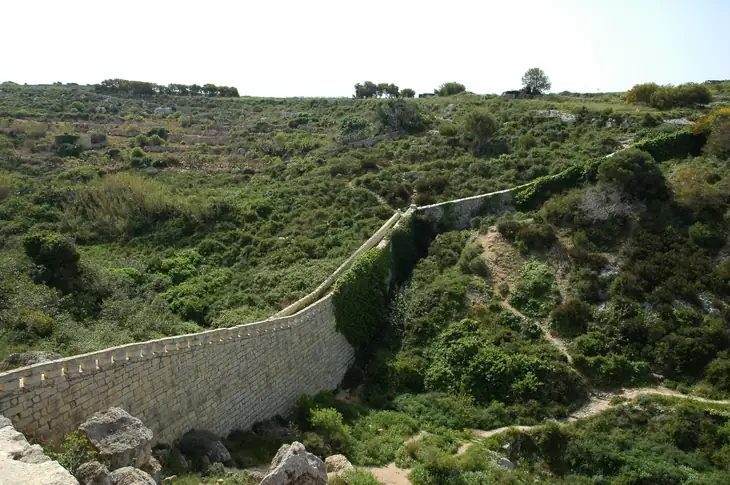Discover the Best Hidden Gems in Malta
Last Updated: Jun 26, 2023
Reading Time: 8 minutes
By: Shaun
Despite its small size, many visitors that make their way to Malta every year do not venture much farther than the popular hot spots like Sliema, St Julians, Valletta, the major megalithic temples, and a few other places in Gozo.
Malta has a lot to offer, and some of its best features are tucked away from the main tourist hotspots. In this article, we will explore some of the hidden gems in Malta that you won’t want to miss.
What are the best hidden gems in Malta?
1. Lower Barrakka Gardens in Valletta

Fountain and monument at the Lower Barrakka Gardens | Image by Bex Walton on Flickr
The Lower Barrakka Gardens are an often overlooked place in Valletta. These gorgeous gardens, just like the more popular Upper Barrakka Gardens, provide amazing views of the Grand Harbour and the Three Cities.
The Lower Barrakka Gardens were built in 1661 but were not open to the public until 1824, after the nearby barracks were demolished. The gardens were heavily damaged during World War II, but they were restored to their former beauty in the 1950s and have since become a popular attraction for both locals and tourists.
The gardens are open every day from 7:00 a.m. to 10:00 p.m. and can be reached after a 10-minute walk from the city centre.
2. Blue Grotto

Blue Grotto | Image by Vicky Shaw on Flickr
The Blue Grotto is a series of sea caves and rock formations on the southern coast of Malta. It is a stunning natural wonder that is best experienced by boat. The water in the caves is an incredible shade of blue, and the sunlight that shines through the water creates a magical effect.
It is definitely worth your time, and since it is very close to Ħaġar Qim and Mnajdra temples, make sure not to miss a trip to the caves.
3. Il-Maqluba

Il-Maqluba | Image by Frank Vincentz on Wikimedia Commons
Also not too far from Ħaġar Qim and Mnajdra temples, one can take a detour to the town of Qrendi and explore the sink hole known as “Il-Maqluba”. This sinkhole is a large, circular hole in the ground, about 40 metres in diameter and 30 metres deep, and its name, “Il-Maqluba” which means “upside-down” in Maltese, reflects the way the sinkhole appears to have turned the landscape upside-down.
There are many legends around this place, but all variations seem to tell the story that a village once stood here. God was not happy with the villagers, and after many warnings, he sent down his angels, which took the village and threw it into the sea, creating the island of Filfla. The only survivor was a lady who used to pray at the church on the outskirts of the village.
4. Dingli Cliffs

Church Of St Mary Magdalen at Dingli Cliffs | Image by user32212 from Pixabay
The Dingli Cliffs are located on the western coast of the country and are the highest cliffs you can find on the islands. They provide a spectacular vantage point over the Mediterranean Sea and are a perfect place to enjoy a sunset.
The cliffs are also a very popular spot for hikers, or just to relax, enjoy the sun, and have a picnic.
5. Għar Dalam Cave

Għar Dalam
Malta’s history goes back over 7,000 years, but some of the oldest remains were found in Għar Dalam Cave. The museum found on site contains a vast collection of fossils and artefacts from the island’s prehistoric past, which were mainly found when the cave was discovered. The cave and museum are must-visit attractions for anyone interested in archaeology and natural history.
After your visit, head further south to the charming town of Birżebbuġa which is a very popular spot with the Maltese, especially during summer. Birżebbuġa is a perfect place for a swim or a quick lunch while exploring the south.
6. St. Peter’s Pool and Kalanka

St. Peter's Pool | Image by Giuseppe Milo on Wikimedia Commons
Another two beautiful spots in the south, not too far from the fishing village of Marsaxlokk, are St. Peter’s Pool and Kalanka.
These two coves are not well known by tourists but are well worth the trip to explore them, so make sure you include them in your itinerary when exploring the south of Malta.
7. Marsascala

Ariel view of Marsascala | Image by kawkijeff on Flickr
Marsascala (or Wied il-Għajn) is a picturesque fishing village on the southeastern coast of Malta. It is a charming town that is often overlooked by tourists, but it is very popular with the Maltese for its restaurants and its lively promenade.
The promenade is a perfect spot to enjoy a leisurely stroll or a bike ride, especially during the warm summer nights.
8. Fomm ir-Riħ

Fomm Ir-Rih | Image by MauiLizard on Wikimedia Commons
Moving away from the south, one can explore Fomm ir-Riħ, which is a secluded beach located on the western coast.
Fomm ir-Riħ is a little unknown as it is not easily accessible, but it is well worth the effort to get there. The beach is surrounded by high cliffs, and the water is crystal clear.
9. Victoria Lines

Victoria Lines right on the boundry between Mġarr and Rabat | Image by Rolf Krahl on Wikimedia Commons
Built in the late 19th century, the Victoria Lines, also known as the Great Wall of Malta, are a series of fortifications that run across the island from Madliena to Fomm ir-Riħ, dividing it into two.
They were named after Queen Victoria, who was the reigning monarch of the British Empire at the time of their construction. The fortifications were built to protect the island from potential invasion and were manned by the British Army until Malta’s independence in 1964.
10. Mosta Rotunda

Mosta Parish Church | Image by Chevaliero78 on Wikimedia Commons
Across the Maltese islands, there is a church for every day of the year, but one that you cannot miss in the skyline of central Malta is the Mosta Parish Church, more specifically its impressive dome.
The church’s design was inspired by the Pantheon in Rome and is one of the largest unsupported domes in the world, with a diameter of 37.2 meters and a height of 68.6 meters.
Visitors to the Mosta Rotunda, as it is also known, can not only be awed by the dome’s sheer size and beauty, but the church’s interior is a feast for the eyes. Visitors can also explore the church’s crypt, which houses a collection of religious artefacts and tombs.
11. Coral Lagoon

Coral Lagoon | Image by Cassarem on Wikimedia Commons
The Coral Lagoon is a small sea cave with a collapsed roof and is definitely one of the most overlooked places on the islands. Due to its location off the beaten path, this natural wonder doesn’t get all the visitors it deserves.
Make no mistake, however, as this is one of the most breathtaking sites on the northern shore, and once you get there, you’ll quickly find out why this is such a popular Instagram and photographed location.
12. Xlendi Bay

Xlendi Bay | Image by Dave Morton on Flickr
Moving our attention to Gozo, our first pick is the village of Xlendi, which over time has evolved from a small fishing village to a tourist hotspot in all respects.
Xlendi is often overlooked by visitors over the larger Marsalforn, but at Xlendi you will not only find lots of restaurants, bars, and hotels but also some great places to take a swim, snorkel, and even do some diving.
13. Wied il-Mielaħ

Wied il-Mielaħ | Image by Ruben Holthuijsen on Flickr
In 2017, one of Malta’s most iconic landmarks, the Azure Window, was destroyed as a result of a violet storm. After that fateful day, the limestone arch at Wied il-Mielaħ quickly filled the void that the Azure Window left in the hearts of all Maltese.
The rock at the top of the arch is still quite thick, so one can walk on top of it, just as one could on the Azure Window a few decades ago. However, since the window is made of the same type of rocks as the Azure Window, it’s just a matter of time before it too crashes into the sea below.
14. The Xwejni Salt Pans

The Xwejni Salt Pans | Image by Corina Möller on Wikimedia Commons
The Salt Pans at Xwejni Bay are a one-of-a-kind attraction in Gozo. What distinguishes these salt panes is that they are still used today in the production of a variety of salt-based products.
During the summer months, the salt is collected roughly once a week. Using brooms and brushes, the salt from each pan is swept and placed in buckets, which are then left to dry for about a day so the water can evaporate. This process will leave behind a massive heap of salt, which then gets collected and stored in huge sacks before being transported for packaging.
Conclusion
Malta is a small island nation that is full of hidden gems and surprises. Apart from the stunning natural wonders of ancient temples and their rich history, the islands have some “secret spots” that make them the perfect way to experience a more authentic Maltese experience.
Frequently Asked Questions
What are the best hidden gems in Malta?
The best hidden gems in Malta include the Blue Grotto, Il-Maqluba, Dingli Cliffs, Coral Lagoon, Għar Dalam Cave, and St. Peter's Pool.
How do I get to the Coral Lagoon?
Drive to L-Armier Bay, to the north of Malta, and continue driving until you reach the campsite. From there, you then need to walk up the rocks to get to the top of the lagoon.
What should I wear to visit the Mosta Church?
When visiting the Mosta Church, it is recommended to dress modestly and respectfully. For men, it is acceptable to wear shorts that reach the knee or longer and a shirt with sleeves. For women, a dress or skirt that reaches the knee or longer and a top that covers the shoulders are considered appropriate.







